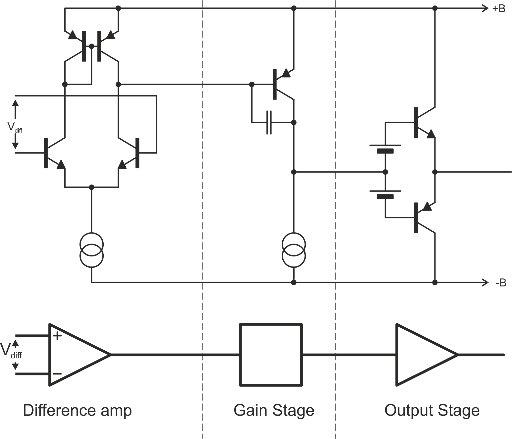Actually, “TIM” is not so much a type of distortion as a test method to detect Slew Induced Distortion. Nobody calls it that though, and if I need to be pedantic, what we call the animal may not be the right hill to die on. So I’ll fold and call it “TIM” just like everyone else.
TIM is a form of distortion caused by the gradual overload of the input stage of “miller” type amplifiers when driven at high frequencies. This type of amplifier includes most op amps, but also most linear power amplifiers. They consist of a differential input stage followed by a gain stage and an output stage.

Incidentally, class D amplifiers don’t come into this discussion. They are structured totally differently and don’t have an inherent TIM mechanism.
Anyhow. The idea behind the Miller circuit is to put in a lot of gain so the input voltage is negligible. Suppose the amplifier has an open-loop gain of 100. That is the gain you get when you remove the feedback network. Suppose now you’re making it put out 20V. That means that the input stage sees 200mV. This is much more than the input stage can handle without distorting. It pretty much breaks the feedback loop because the gain stage sees a signal that’s already distorted. The gain stage ends up amplifying the wrong signal. The problem isn’t that the feedback loop is causing distortion. The problem is that the amplifier hasn’t got enough gain to allow the input stage to stay linear. 100 is not “a lot” then.
Now I hear you ask, haven’t feedback amplifiers got much, much higher open-loop gain? They do, but only at DC. At 20kHz, 100x was a normal value for a typical 1970’s solid state amplifier. That was why in those years Matti Otala had to draw attention to the fact that at high frequencies distortion from the input stage couldn’t be ignored. By contrast, at 1kHz the same amplifier would have an open-loop gain of 2000, and for the same 20V output the corresponding 10mV across the input stage was unproblematic.
So how do you solve this? Simple: more open-loop gain. Not just at DC of course but over the entire frequency range. Of course, “more open-loop gain” is the same as “more feedback”. TIM isn’t caused by too much feedback. It’s caused by not enough feedback. That’s the exact reverse of what most people believe. If you see a lot of TIM it means you’ve tried, and failed to build an amplifier with a lot of feedback.
This gives you a handy shibboleth to see, whenever someone is holding forth on amplifiers, which end of their anatomy they’re talking out of. Simply ask them whether feedback causes TIM. If they say yes, you can safely ignore anything else they might have to offer on the subject.
___________
A much more detailed version of this story was published under the title “The F word”, and is available here: https://linearaudio.net/sites/linearaudio.net/files/volume1bp.pdf